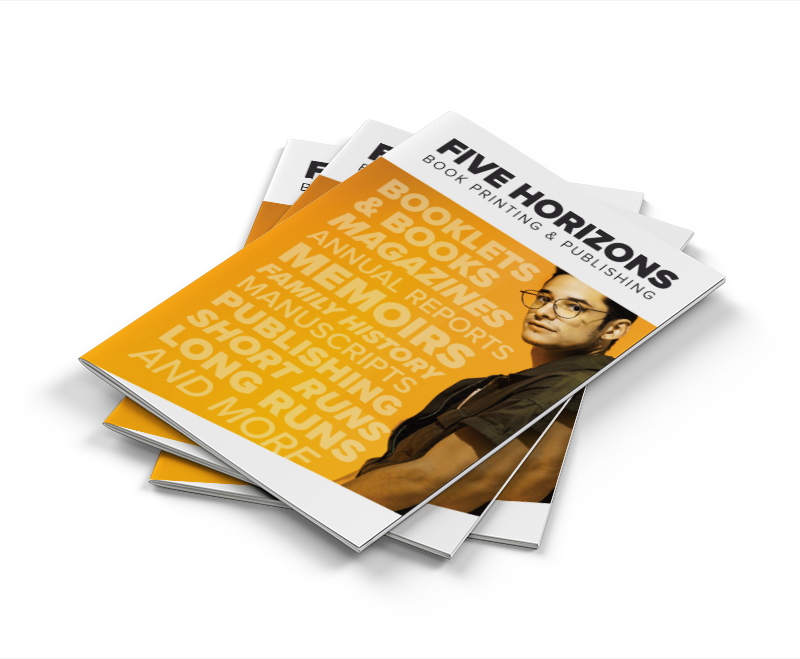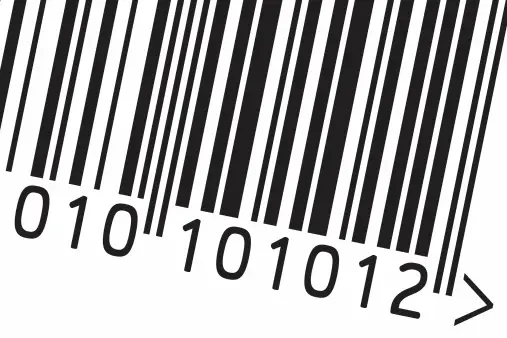






When printing perfect bound books in Australia, it is important to understand the legal requirements and the role of an ISBN (International Standard Book Number). This article will guide you through the process of obtaining an ISBN, placing it on your book, and complying with legal deposits. By following these steps, you can ensure that your perfect bound book is legally published and ready for distribution in Australia.

Perfect binding is a popular method of book binding that involves using adhesive to attach the pages to a paper cover. Unlike traditional binding methods, such as stitching or stapling, perfect binding creates a clean and professional finish.
With perfect binding, the book’s pages are collated, and then adhesive is applied to the spine of the book block. The cover, typically made from heavier paper or card stock, is then wrapped around the book block, securing the pages in place. The adhesive bonds the pages and cover together, resulting in a strong and durable binding.
Perfect binding is widely used for various types of books, including novels, annual reports, year books, textbooks, magazines, and catalogs. It offers a sleek and professional appearance, making it a popular choice for self-published authors and businesses.
The choice of paper and cover stocks plays a crucial role in the overall look and feel of a perfect bound book. It’s important to consider the purpose of the book and the desired impression you want to make on readers.
When selecting paper stocks for the pages of your book, consider factors such as weight, texture, and color. Thicker paper stocks can enhance the durability and premium feel of the book, while a smooth texture can provide a pleasing reading experience. Additionally, choosing the right color can complement the book’s content and help set the tone.
For the cover, consider using a heavier card stock that can withstand wear and tear. Consider using finishing on the covers, such as a Gloss Finish, Matt or Velvet Laminates options. The cover is the first thing readers and customers see, so it should be visually appealing and reflect the essence of the book.
The internal page layout plays a significant role in ensuring the readability and visual appeal of the book. It’s important to create a layout that enhances the reading experience and guides readers through the content smoothly.
Consider these factors when designing the internal page layout:
By carefully considering the perfect binding, paper stocks, cover stocks, and internal page layout, you can create a visually stunning and professionally printed perfect bound book.

Before proceeding with the printing process, there are several preliminary steps to take. These steps are essential to ensure that your perfect bound book is of the highest quality and ready for distribution. The following sections outline these important preliminary steps:
Before sending your book for printing, it is crucial to finalize the content. This includes reviewing and revising the manuscript thoroughly to ensure accuracy and coherence. Take the time to check for any spelling or grammatical errors, and make sure that the content flows smoothly from chapter to chapter. Additionally, consider obtaining feedback from beta readers or professional editors to improve the overall quality of your book.
Proofreading and editing are fundamental steps in the book production process. Carefully review the manuscript to catch any remaining errors or inconsistencies. Pay close attention to punctuation, grammar, and sentence structure. Editing is not just about fixing errors but also ensuring the clarity and effectiveness of your writing. Consider hiring a professional editor or proofreader to provide a fresh perspective and ensure a polished final product.
In addition to the written content, your perfect bound book may also include colour artwork, illustrations, or other design elements. Take the time to gather and prepare these visual elements in the appropriate formats and resolutions. Make sure that the artwork is high-quality and visually appealing. If necessary, work with a graphic designer or illustrator to create or refine these elements to enhance the overall aesthetic of your book.
Once your book’s content, manuscript, and artwork are finalized, it is time to create a print-ready file. This involves formatting your content according to the printer’s specifications, such as page size, margins, and font styles. Additionally, ensure that your file is saved in a suitable format, such as PDF, to ensure compatibility and maintain the integrity of your book’s layout and design.
Before sending your book for printing, it is crucial to review and double-check all aspects of your manuscript, artwork, and design elements. Take the time to go through every page and ensure that everything is in order, including proper page numbering, headers, and footers. This final review will help you catch any last-minute errors or issues that may have been missed during the previous steps.
When it comes to printing perfect bound books, understanding the ISBN essentials is crucial. An ISBN (International Standard Book Number) is a unique identifier used to track books and is essential for book distribution and sales. This section will guide you through the process of applying for an ISBN in Australia and provide information on how to properly place the ISBN and barcode on your book.
An ISBN is a 13-digit number that uniquely identifies your book and its edition. It serves as a crucial tool for libraries, retailers, and distributors to catalog and track books. Having an ISBN increases the discoverability and credibility of your perfect bound book, making it easier for potential readers to find and purchase.
Applying for an ISBN in Australia is a straightforward process. You can obtain an ISBN by visiting the website of the Australian ISBN Agency, which is responsible for assigning ISBNs to publishers and self-published authors in Australia. Fill out the application form provided on their website, providing accurate details about your book, such as title, author, publication date, format, and edition number. Once your application is reviewed and approved, you will receive your ISBN(s) via email.
Proper placement of the ISBN and barcode on your perfect bound book is essential for accurate tracking and identification. The ISBN should be displayed on the copyright page of your book, along with other publishing information. The barcode, which contains the ISBN and pricing information, should be placed on the back cover. Ensure that the barcode is clear and properly aligned to prevent scanning issues.
It is also worth noting that different countries may have specific requirements for ISBN placement and barcode size. Be sure to check the guidelines provided by the Australian ISBN Agency or consult with your printing service to ensure compliance.
By understanding the importance of ISBNs, applying for an ISBN in Australia, and properly placing the ISBN and barcode on your perfect bound book, you can ensure that your book is easily identified, distributed, and available for sale.
Legal deposits and cataloguing-in-publication (CiP) are essential requirements for printed books in Australia. Understanding and complying with these obligations are crucial steps in the printing process. This section will provide an overview of the requirement of legal deposit for printed books, explain how to obtain a cataloguing-in-publication entry, and discuss the legal implications and compliance associated with these requirements.
In Australia, legal deposit is a legal requirement that ensures copies of published materials are preserved and accessible in national library collections. Publishers and authors are obligated to submit copies of their publications to the National Library of Australia and relevant state/territory libraries.
Legal deposits serve two main purposes:
The exact requirements for legal deposits may vary depending on the jurisdiction. It’s crucial to familiarize yourself with the specific legal deposit obligations in your state/territory.

A cataloguing-in-publication (CiP) entry is a bibliographic record provided by the National Library of Australia to assist libraries in cataloguing newly published books. Obtaining a CiP entry can enhance the visibility and accessibility of your book, making it easier for libraries, booksellers, and readers to discover and acquire your work.
To obtain a CiP entry, follow these steps:
Obtaining a CiP entry is not mandatory but highly recommended, as it provides valuable information to libraries and helps streamline the cataloguing process for your book.
Compliance with legal deposits and cataloguing-in-publication requirements is vital to ensure the legal status of your printed book. Failure to fulfill these obligations may result in legal consequences, including fines or implications on copyright protection.
By complying with legal deposit requirements, you contribute to the preservation of Australia’s cultural heritage, and by obtaining a CiP entry, you enhance the discoverability of your book.
It is recommended to consult with legal and publishing professionals to ensure full compliance with legal obligations and to understand the specific implications in your publishing journey.
| Requirement | Importance |
|---|---|
| Legal Deposits | Preserves national cultural heritage and facilitates access to published materials. |
| Cataloguing-in-Publication | Enhances visibility and discoverability of your book for libraries and readers. |
| Compliance | Avoids legal consequences and ensures the legal status of your printed book. |

When it comes to printing your perfect bound book, choosing the right printing service is crucial to ensuring a high-quality final product. Here is a step-by-step guide to help you select the perfect printing service in Australia:
By following these steps and considering factors such as printing capabilities, turnaround time, pricing, and customer reviews, you can make an informed decision and select a reputable printing service that will deliver a high-quality perfect bound book for you.
| Printing Service A | Printing Service B | Printing Service C | |
|---|---|---|---|
| Printing Capabilities | Offers a wide range of options | Limited options available | Specializes in perfect bound books |
| Turnaround Time | 2-3 business days | 5-7 business days | 24-48 hours |
| Pricing | Affordable rates | Expensive compared to others | Competitive pricing |
| Customer Reviews | Positive feedback, especially for perfect bound book printing | Mixed reviews | Highly recommended for perfect bound books |
| Samples | Provides a variety of samples | No samples available | Offers samples for perfect bound books |
When preparing to print your perfect bound book, it’s essential to create print-ready files that meet the necessary specifications. This involves formatting the book’s interiors, designing a captivating cover, and uploading the final files to the printer. In this section, we will provide you with valuable tips and guidance to ensure that your print-ready files are ready for perfect binding.
Proper formatting is crucial for creating a visually appealing and professional-looking interior for your perfect bound book. Here are some formatting tips to consider:
By following these formatting tips, you can create an aesthetically pleasing and reader-friendly layout for your perfect bound book.
The cover of your perfect bound book is the first impression your readers will have, so it’s crucial to design a captivating and impactful cover. Consider the following tips when designing your book cover:
A well-designed and captivating book cover will pique the interest of potential readers and increase the chances of your book getting noticed.
Once you have finalized the formatting of your book’s interiors and designed an impressive cover, it’s time to upload your print-ready files to the printer. Here’s a step-by-step process to help you with file upload:
By following these steps, you can confidently upload your print-ready files and proceed with the perfect binding process.
Now that you have learned how to create print-ready files, format your book interiors, design a captivating cover, and upload your files to the printer, you are one step closer to holding the finished perfect bound book in your hands. The next section will delve into the importance and role of editing and typesetting in the printing process.
Professional editing and typesetting are essential elements in the printing process, particularly for self-published authors. This section highlights the importance of professional editing, including proof reading and copy editing, as well as collaborating with designers on typesetting and layout. It also explores cost considerations for editing and typesetting services, helping you make informed decisions for your book.
Professional editing plays a crucial role in self-publishing, ensuring your book is polished, error-free, and ready for readers. Skilled editors can provide comprehensive proof reading to catch any grammatical, spelling, or punctuation mistakes. They can also offer copy editing to improve the clarity, coherence, and overall quality of your writing. By investing in professional editing, you enhance the professionalism and credibility of your self-published book.
Typesetting and layout are significant aspects of book design that contribute to the visual appeal and readability of your work. Collaborating with experienced designers allows you to create a well-structured and aesthetically pleasing interior design. They can help with font selection, spacing, margins, and overall formatting, ensuring that your book looks professional and engages readers effectively.
When considering editing and typesetting services, it’s important to factor in the associated costs. The fees for professional editing can vary depending on the length and complexity of your manuscript, as well as the level of editing required. Similarly, the cost of typesetting services can vary based on factors such as the number of pages and the complexity of the design. It is recommended to obtain quotes from multiple service providers and choose the option that offers a balance of quality and affordability.
| Service | Average Cost |
|---|---|
| Proof reading | $0.01-$0.05 per word |
| Copy editing | $0.03-$0.10 per word |
| Typesetting | $2-$10 per page |

When it comes to pricing and ordering copies of your perfect bound book, there are several factors to consider. The quantity, paper stock, and printing options you choose can all impact the cost and availability of your book. To help guide you through this process, here is a step-by-step breakdown of how to determine the pricing and place your order:
By following these steps and considering the factors mentioned, you can determine the pricing for your perfect bound book and place your order confidently. Remember to assess your printing options carefully, aiming for a balance between cost, quality, and meeting your target audience’s expectations.
Once your perfect bound book is printed and ready for distribution, it’s time to focus on promoting it effectively in Australia. Implementing the right marketing strategies can help you reach your target audience and increase visibility for your book.
When it comes to book promotion, it’s important to leverage both online and offline channels to maximize your reach. Online channels offer a wide range of opportunities, such as:
While online channels are essential, offline channels also play a significant role in book promotion. Consider these offline strategies:
In addition to promotion, it’s crucial to leverage retail and library networks for distribution and visibility. Consider these strategies:
| Retail Distribution | Library Distribution |
|---|---|
| Partner with local bookstores or online retailers to stock and sell your book. | Submit your book to local libraries for consideration in their collections. |
| Offer limited-time discounts or exclusive promotions to entice retailers and attract readers. | Participate in library events or author programs to engage with readers and generate interest. |
| Attend trade shows or book expos to connect with distributors, wholesalers, and retailers. | Optimize your book’s metadata and keywords to increase discoverability in library catalogs. |
By strategically leveraging both online and offline channels, as well as retail and library networks, you can effectively promote and distribute your perfect bound book in Australia, increasing its visibility and reaching a wider audience.
In conclusion, successfully printing perfect bound books in Australia requires careful planning and attention to detail. By following the steps outlined in this article, you can navigate the legal requirements and obtain an ISBN for your book, ensuring that it is legally published and ready for distribution.
Before printing your book, make sure to complete a final checklist to ensure everything is in order. This checklist should include finalizing your book’s content, proofreading and editing your manuscript, and preparing your book’s artwork and design elements. By taking these preliminary steps, you can ensure that your book is ready for the printing process.
Preparing thoroughly for the perfect bound printing process has many benefits. It allows you to create a high-quality final product that meets professional standards. It also ensures that your book is compliant with legal requirements, such as legal deposits and cataloguing-in-publication. Additionally, thorough preparation increases the chances of a successful marketing and distribution strategy for your book.
By following this guide and preparing thoroughly, you can ensure a successful printing experience and produce a professionally produced perfect bound book that is ready to captivate readers in Australia and beyond.
Perfect binding is a popular method of book binding that involves using adhesive to attach the pages to a paper cover.
When selecting paper and cover stocks for your perfect bound book, consider factors such as durability, finish (such as gloss or matt), and the overall aesthetic appeal that suits your project.
When designing the internal pages of your perfect bound book, it’s important to consider factors such as margins, fonts, line spacing, and overall readability.
Before proceeding with the printing process, finalize your book’s content, proofread and edit your manuscript, and ensure your book’s artwork and design elements are print-ready.
An ISBN is a unique identifier used to track books and is essential for book distribution and sales. It is necessary to obtain an ISBN for your perfect bound book before it can be legally published and ready for distribution in Australia.
To apply for an ISBN in Australia, you will need to contact the appropriate agency, such as the Australian ISBN Agency. They will provide you with the necessary application forms and guide you through the process.
The ISBN and barcode should be placed on the back cover of your perfect bound book. The barcode can be positioned in the lower right corner, while the ISBN should be clearly visible.
Legal deposits refer to the requirement of depositing copies of printed books with legal deposit libraries, such as the National Library of Australia. Cataloguing-in-publication (CiP) is a service provided by the National Library of Australia to create a standardized bibliographic record for your book. These requirements ensure compliance with Australian legal obligations.
To obtain a cataloguing-in-publication entry, you will need to complete the CiP application form provided by the National Library of Australia. This process generally occurs after you have obtained an ISBN for your book.
When selecting a printing service in Australia, consider factors such as their printing capabilities, turnaround time, pricing, and customer reviews. Be sure to choose a reputable printing service that can meet your specific requirements.
To create print-ready files for your perfect bound book, ensure that your interior pages are formatted correctly with appropriate page size, margins, fonts, and line spacing. Additionally, design a captivating cover that aligns with your book’s content and upload your print-ready files to the printer’s website or platform.
Professional editing, including proofreading and copy editing, ensures that your book is free from errors and grammatical inconsistencies. Typesetting and layout design create a visually appealing and consistent reading experience. These services help enhance the overall quality of your perfect bound book.
Pricing for perfect bound books can vary depending on factors like the quantity, paper stock, and printing options chosen. Contact the printing service to obtain a quote based on your specific requirements. Determine the cost per unit and set a competitive price for your book. When ordering copies, consider the minimum order quantities and production timelines.
To promote your perfect bound book in Australia, consider utilizing online and offline marketing strategies. Leverage platforms like social media, your website, email marketing, and book launch events. Explore partnerships with retailers and libraries to increase visibility and distribution.
In the final checklist, ensure that you have finalized your content, obtained an ISBN, complied with legal deposits and cataloguing-in-publication requirements, selected a printing service, created print-ready files, and promoted your book effectively. Review and confirm that all necessary steps have been taken for a successful printing process.
Thorough preparation for the perfect bound printing process ensures that your book is legally published, professionally produced, and ready for distribution. It helps you avoid costly mistakes, ensures compliance with legal requirements, and enhances the overall quality of your book.
Copyright © 2025 Five Horizons. All Rights Reserved.